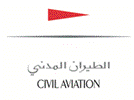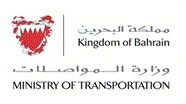 | AIP Supplement for Kingdom of Bahrain and State of Qatar |  |
AIP SUP 22/2013 | Effective from 23 SEP 2013 to PERM | Published on 23 SEP 2013 |
 | AIP Supplement for Kingdom of Bahrain and State of Qatar |  |
AIP SUP 22/2013 | Effective from 23 SEP 2013 to PERM | Published on 23 SEP 2013 |
VALID SUPPLEMENTS: 06/00, 07/00, 03/02, 02/04, 03/08, 04/08, 02/10, 05/12, 06/12, 08/12, 11/13, 14/13, 07/13, 18/13, 19/13, 20/13, 21/13 AND 22/13
CANCELLED SUPPLEMENT: NIL
NOTAM CANCELLED BY THIS SUPPLEMENT: NIL
In-Flight Fuel Management - Phraseology for Fuel Related Messages to Air Traffic Control
(ATC)
Ref. Publications: ICAO Annex 6
ICAO State letter 10/2012, Amendment 36 to Annex 6 Part I
ICAO Doc. 4444, PANS-ATM
Applicability: All holders of a Bahrain Air Operator Certificate (AOC)
Acronyms used in this AC:
ATC Air Traffic Control
PANS- ATM Procedures for Air Navigation Services - Air Traffic Management
SARPS Standards And Recomended Practices
Description: Through state letter 10/2012, ICAO announced the adopted amendment 36 to Annex 6 Part I effective as of 15 November 2012. This amendment introduced, among others, new standards for in - flight fuel management and a new fuel - related phraseology.
The relevant standards are the following:
4.3.7 In - flight fuel management
4.3.7.1 An operator shall establish policies and procedures, approved by the state of the Operator, to ensure that in - flight fuel checks and fuel management are performed.
4.3.7.2 The pilot - in - command shall continually ensure that the amount of usable fuel remaining on board is not less than the fuel required to proceed to an aerodrome where a safe landing can be made with the planned final reserve fuel remaining upon landing.
4.3.7.2.1 The pilot - in - command shall request delay information from ATC when unanticipated circumstances may result in landing at the destination aerodrome with less than the final reserve fuel plus any fuel required to proceed to an alternate aerodrome or the fuel required to operate an isolated aerodrome.
4.3.7.2.2 The pilot - in - command shall advise ATC of a minimum fuel state by declaring "MINIMUM FUEL" when, having commited to land at a specific aerodrome, the pilot calculates that any change to the existing clearance to that aerodrome may result in landing with less than planned final reserve fuel.
Note 1. - The declaration of MINIMUM FUEL informs ATC that all planned aerodrome options have been reduced to a specific aerodrome of intended landing and any change to the existing clearance may result in landing with less than planned final reserve fuel. This is not an emergency situation but an indication that an emergency situation is possible should any additional delay occur.
Note 2. - Guidance on declaring minimum fuel is contained in the Fuel Planning Manual (Doc 9976). It should be noted that Pilots should not expect any form of priority handling as a result of a "MINIMUM FUEL" declaration. ATC will, however. advise the flight crew of any additional expected delays as well as coordinate when transferring control of the aeroplane to ensure other ATC units are aware of the flight’s fuel state.
4.3.7.2.3 The pilot - in - command shall declare a situation of fuel emergency by broadcasting "MAYDAY, MAYDAY, MAYDAY, FUEL", when the calculated usable fuel predicted to be available upon landing at the nearest aerodrome where a safe landing can be made is less than the planned final reserve fuel.
Note 1. - The planned final reserve fuel refers to the value calculated in 4.3.6.3 e) 1) or 2) and is the minimum amount of fuel required upon landing at any aerodrome.
Note 2. - The words "MAYDAY FUEL" describe the nature of the distress conditions as required in Annes 10, Volume II, 5.3.2.1, b) 3.
Note 3. - Guidance on procedures for in-flight fuel management are contained in the Fuel Planning Manual (Doc 9976).
The corresponding provisions for controllers can be found in 15.5.4 of PANS-ATM.
Recommendation(s): Untill the necessary amendments are made to ANTR OPS 1, the BCAA highly recommends that operators amend their procedures for in - flight fuel management and the fuel related phraseology in accordance with the new ICAO SARPS and to document those changes in their Operations Manual accordingly.
Contact(s): For further information contact the Aviation Safety Rules and Regulations Section, Bahrain Civil Aviation Affairs. E-mail: Aerolincensing@caa.gov.bh